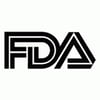 In a final guidance published in the Federal Register on May 5, FDA laid out the rules and specifications for providing regulatory submissions in electronic format. Perhaps more important than the content within the guidance is the fact that the publication begins the countdown to the mandatory implementation date when electronic submissions will be required by the Agency. For many, this will be business as usual – after all, submissions in the electronic Common Technical Document (eCTD) format were used for 87% of NDA related submissions as of the end of 2014. However, with the publication of this guidance it is officially mandated that NDA, BLA, ANDA, and Master File eCTD submissions will be compulsory starting May 5, 2017, while commercial IND eCTD submissions will be compulsory starting May 5, 2018.
In a final guidance published in the Federal Register on May 5, FDA laid out the rules and specifications for providing regulatory submissions in electronic format. Perhaps more important than the content within the guidance is the fact that the publication begins the countdown to the mandatory implementation date when electronic submissions will be required by the Agency. For many, this will be business as usual – after all, submissions in the electronic Common Technical Document (eCTD) format were used for 87% of NDA related submissions as of the end of 2014. However, with the publication of this guidance it is officially mandated that NDA, BLA, ANDA, and Master File eCTD submissions will be compulsory starting May 5, 2017, while commercial IND eCTD submissions will be compulsory starting May 5, 2018.
The guidance itself is fairly unambiguous, clearly delineating which submissions will fall under these requirements and which will be exempt. The overall tone of the guidance is somewhat unique as it does not include the standard caveat that the guidance is nonbinding and is only a recommendation. Instead, FDA states that “[i]nsofar as this document specifies the format for electronic submissions, or provides ‘criteria for…exemptions’ under section 745A(a) of the FD&C Act, it will have binding effect.”
This requirement for eCTD submissions generally applies to all NDAs, ANDAs, and Master Files, as well as certain BLAs and INDs. Applicable exemptions include:
- INDs for devices regulated by CBER as a biological product
- Examples include devices used to screen blood donors or to test human tissues
- Noncommercial INDs
- Examples include investigator-sponsored INDs and expanded access INDs
- BLAs for devices regulated by CBER as a biological product
- Examples include reagents used to determine donor/recipient compatibility
- BLAs for blood and blood components
- Examples include blood for transfusion
In a reversal, this final guidance includes master file submissions which were previously excluded from the draft guidance published in 2013. Though the final guidance does not apply to the submission of promotional materials, FDA indicates that additional information will be published on this topic in another guidance. By the looks of the most recent version of the comprehensive table of contents (version 2.3), promotional materials will likely end up in Module 1 of the CTD.
This guidance does not seem to suggest that a sponsor must convert their entire paper application to electronic format for the deadline but instead must use the eCTD format to submit any subsequent “amendments, supplements, and reports, even if the original submission was submitted to FDA prior to implementation of the electronic submission requirements.” There must be quite a few very old applications on file at FDA which may not resemble the modern CTD format, and therefore submitting new sequences in eCTD format will likely come with some growing pains. However, it’s clear that electronic submissions, and eCTD format, is here to stay.
TAGS: Abbreviated New Drug Application (ANDA) Investigational New Drug (IND) New Drug Application Center for Biologics Evaluation & Research (CBRE)


